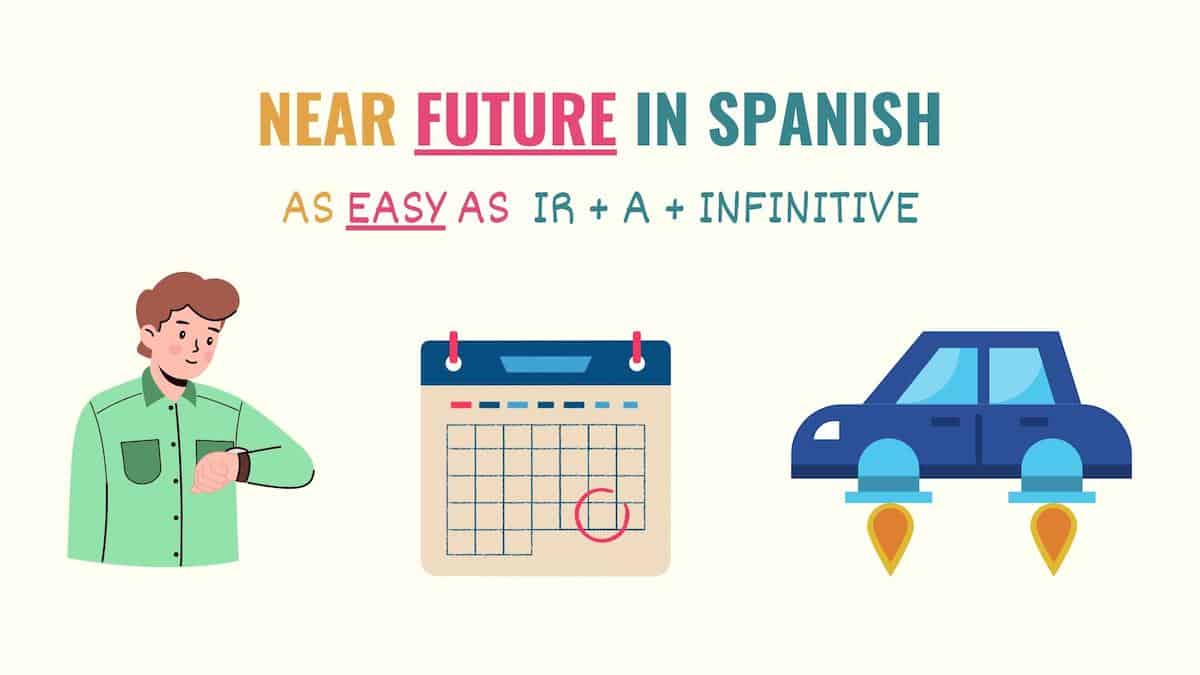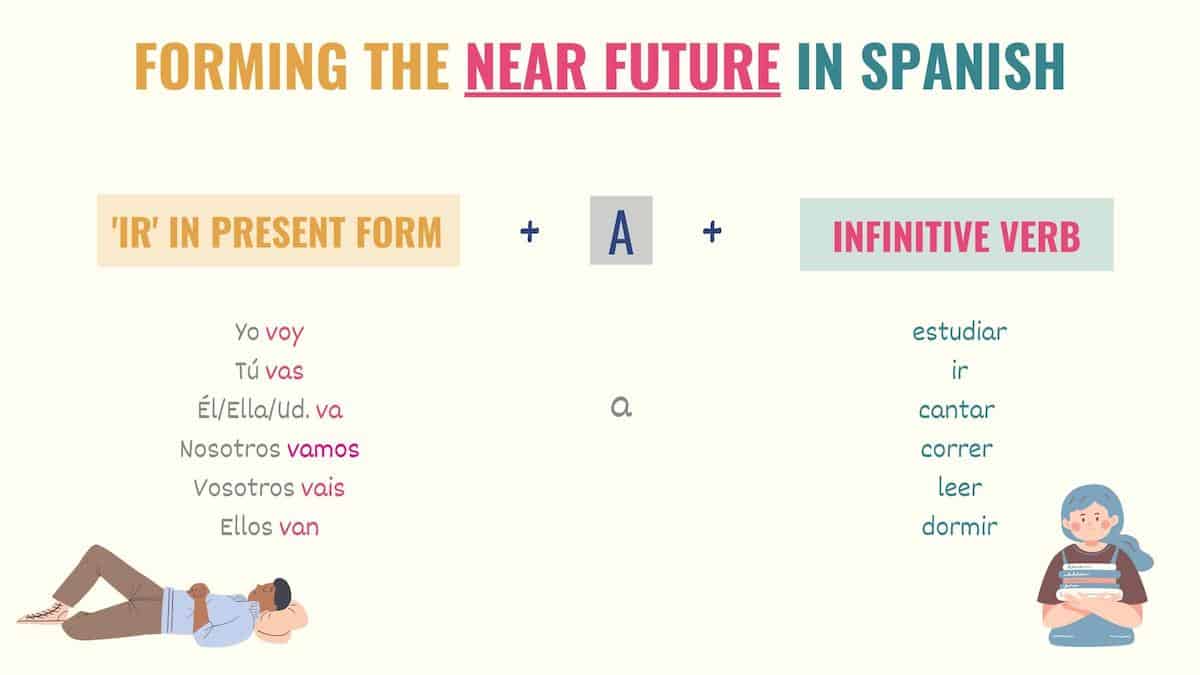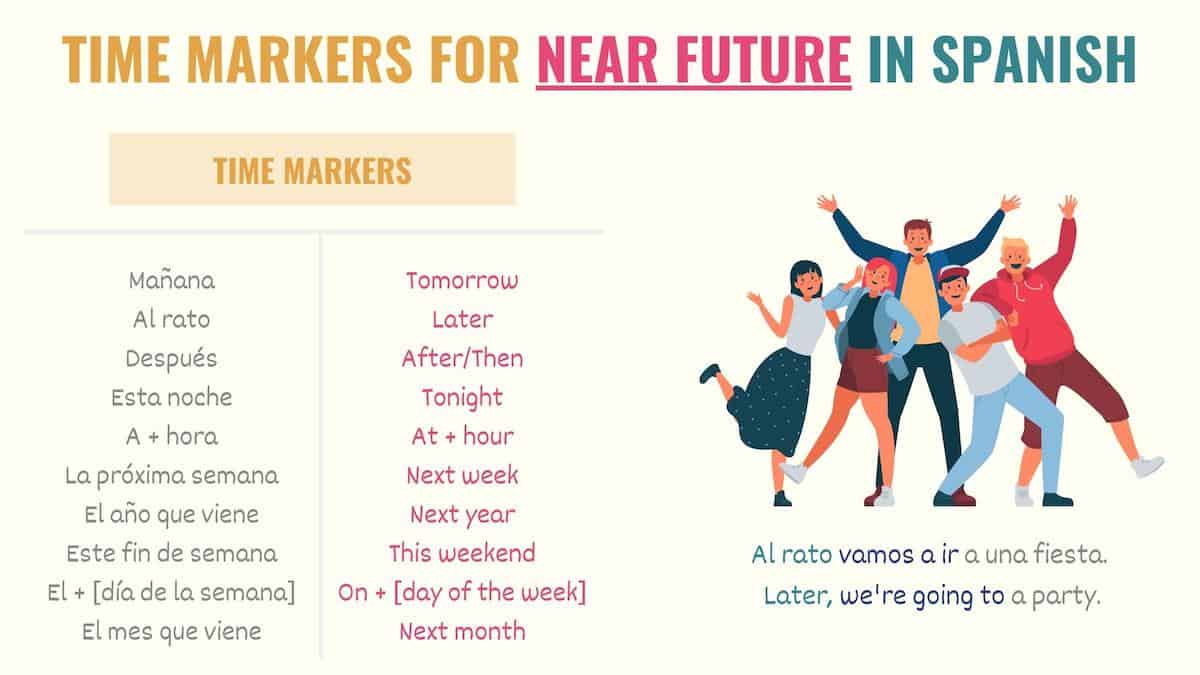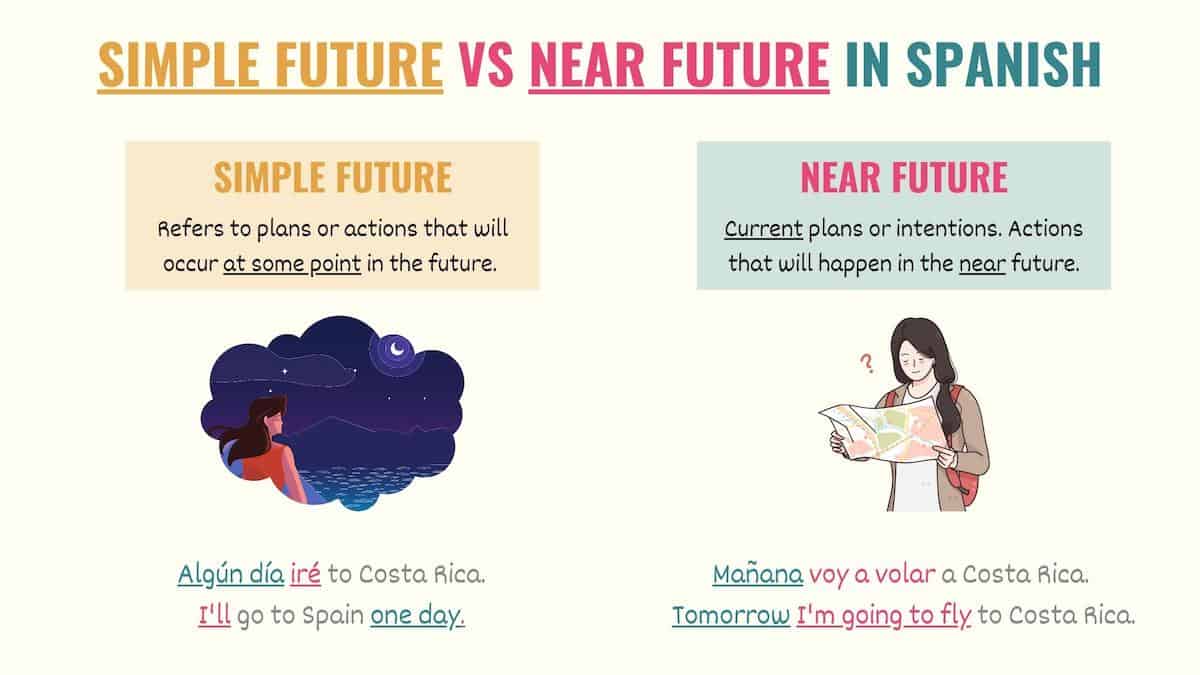

I’ll also include examples, so you can see how to use this Spanish tense. Let’s get to it!
As mentioned above, the near future is formed with ir, the preposition a, and one infinitive. When using this structure, ‘ir’ must be conjugated to the present tense.
Here is a quick summary of ‘ir’ in the present tense.
| Subject | Ir in Present Tense |
|---|---|
| Yo | voy |
| Tú | vas |
| Él / Ella / Usted | va |
| Nosotros | vamos |
| Vosotros | vais |
| Ellos / Ellas / Ustedes | van |
Once you’ve conjugated ‘ir’, you’ll fill in the rest of the formula:
[‘Ir’ present tense] + a + [infinitive form]
Mañana voy a ir al cine.
Tomorrow, I am going to go to the movies.
¿Qué vas a hacer este fin de semana?
What are you going to do this weekend?
Unlike other Spanish tenses, the near future does not have endings. Instead, you must use the present form of ‘ir’.

Take Note: When the present conjugations of ir are followed by an infinitive, this structure means ‘going to’ in English. As you can see, infinitives are key to conjugating the near future in both languages because it expresses the action someone is going to perform. Without it, the information would be incomplete.
In many cases, a sentence in Spanish near future may require an object or reflexive pronoun. These elements are added to the ir a infinitive formula. When doing so, you have two options:
#1 Place them before the conjugated verb (ir)
[Object or reflexive pronoun] + [‘ir’ conjugated] + a + [infinitive verb]
Se va a bañar .
She is going to shower .
Le vamos a regalar un boleto.
We are going to give her a ticket.
#2 Attach them to the infinitive
[‘Ir’ conjugated] + a + [infinitive verb] + [object or reflexive pronoun]
Va a bañar se.
She is going to shower .
Vamos a regalar le un boleto.
We are going to give her a ticket.
The meaning of the sentences are exactly the same whether you use option 1 or 2.
Now that you know how to form the near future, let’s see how and when you’re going to use it.
In Spanish, the near future refers to actions that will happen in the near or immediate future . Simply put, it refers to activities that will occur very soon. So, the near future is used to talk about:
Current plans or intentions about the future
[‘Ir’ conjugated] + a + [infinitive verb]
Creo que voy a querer más pastel.
I think I am going to want more cake.
El lunes vamos a ir a jugar boliche.
On Monday, we are going to go bowling.
Mis amigos van a venir a visitarme este año.
My friends are going to come to visit me this year.
Potential outcomes resulting from a current situation
[‘Ir’ conjugated] + a + [infinitive verb]
Si te mojas, te vas a enfermar.
If you get wet, you are going to get sick.
¡Mira qué nublado está! Seguro va a llover.
Look how cloudy it is! It is going to rain for sure.
Actions or events that will take place in the near future
[‘Ir’ conjugated] + a + [infinitive verb]
La película va a empezar a las cinco.
The movie is going to start at five.
Tú vas a saber conjugar el futuro próximo.
You are going to know how to conjugate the near future.
Take Note: Notice that the time markers for the immediate future describe a time close to the present. For that reason, it’s common to use time markers such as este año (this year), a las cinco (at five), el año que viene (next year), el lunes (on Monday), etc.

The near and simple future are used to talk about the future in Spanish. However, the difference between these tenses is the nuance and temporary distance you want to express.
The near future describes actions that will take place very soon.
Mañana voy a ir al dentista.
Tomorrow I am going to the dentist.
On the other hand, the simple future refers to actions that will happen at some point in the future. We use it to discuss plans and make hypotheses about the future.
En unos meses iré al dentista.
I will go to the dentist in a few months.
Because it’s so close to the present, the near future implies certainty , whereas the simple future is not as concrete because it doesn’t refer to upcoming actions . Check the second example. There is so much time between now and then that things can change. Although it’s a future plan, we’re not sure if I’ll actually go.

Tip: In conversational Spanish, the near future is seen as an informal version of the future. However, as you’ve learned, these tenses have a minor nuance.
When talking about the future actions, you’re more likely to use the near future in Spanish. So, here are some key points you should remember:
Learning Spanish grammar topics such as new tenses can take time. Take advantage of the infinitive form of verbs you already know with my summarized notes and graphics on the near future tense. You can study it later at your own pace and level up your Spanish language skills!